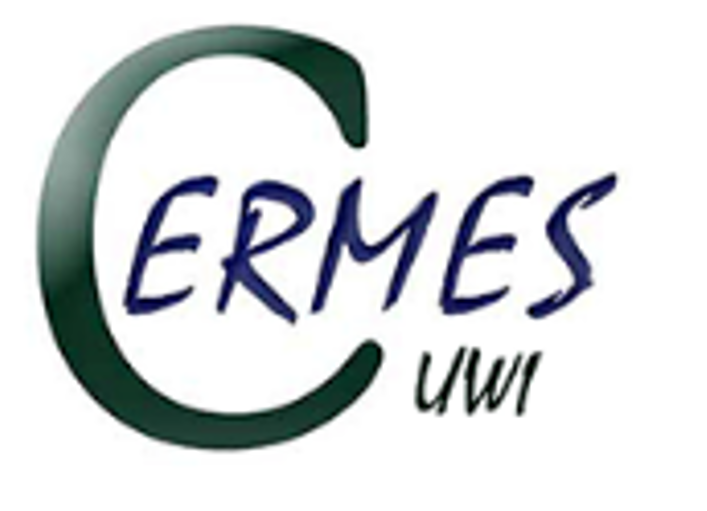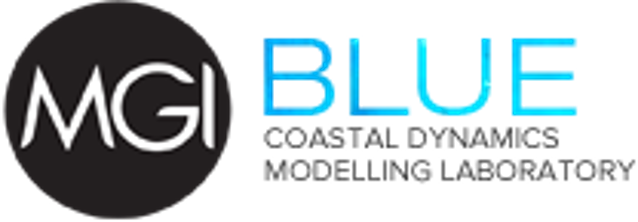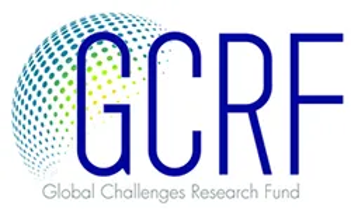Fieldtrips, meetings and a symposium in Barbados, March 2023
On Saturday 4 March, four SARTRAC project members arrived in Barbados from north, east and west: Prof Robert (Bob) Marsh (University of Southampton, UK); Dr Winnie Sowah and Bernice Oppong (University of Ghana); Romario Anderson (Mona Geoinformatics Institute, Jamaica). Based just outside the historic Garrison area of Bridgetown and hosted by colleagues from the Centre for Resource Management and Environmental Studies (CERMES) at the University of the West Indies (UWI), we were here for a week of fieldtrips, meetings, and a symposium, to share our knowledge of sargassum and to find out more about experiences of sargassum in the eastern Caribbean. This visit was one of the final activities of SARTRAC (2019-22), extended for 6 months as SargLegacy. Here’s the story of our week.
Monday 6 March: Round-island tour
We met with local colleagues at CERMES, on the Cave Hill campus, before heading off on a day-long, generally clockwise island tour, starting in the UNESCO World Heritage Site of Historic Bridgetown and its Garrison. Our guides, providing expert commentary, were Kevin Farmer, Deputy Director of the Barbados Museum & Historical Society, and Dr Patrick McConney of CERMES. From Bridgetown, we progressed north along the west coast, appreciating the development of this coastline, via Holetown to Speightstown, where we stopped for lunch at Clement Armstrong’s iconic Fisherman’s Pub. North of Speightstown, we headed inland across the north of the island, to arrive at River Bay, a narrow inlet heavily impacted by sargassum. Heading south over Cherry Tree Hill, the Scotland District and east coast opened up before us, and we took a convoluted route back to CERMES via some of wilder interior and coastal scenery – the island in a day!
It was evident, through both the visual evidence observed on the island tour and stories told by field guides and locals alike, that there were deleterious impacts associated with sargassum inundation along the coastline of Barbados. Once popular ‘liming’ spots have been transformed into barren coastlines with smelly piles of seaweed.
Tuesday 7 March: Blue and Green Economy, engagement in St Lucia and the Fisheries Division
In the morning, outrider motorcyclist Patrick led us and Bethia Thomas (UWI-CERMES PhD student) to the Ministry of Environment and National Beautification (MENB), Blue and Green Economy, at Warrens Tower II on the northern outskirts of Bridgetown. Here we met with Sonia Foster (Permanent Secretary, Blue and Green Economy), Antonio Rowe (Deputy Director, Coastal Zone Management Unit), Danny Babb (Assistant Coordinator, Sargassum Clean-up Program), Shelly Anne Cox (Chief Fisheries Officer, Barbados), Derrick Theophille (Chief Fisheries Officer, Dominica), and Tanbaje Sealy (senior economist at the ministry).
In round-table discussions, Antonio first recalled how sargassum started by arriving on Barbados beaches in 2011. He spoke about how beach clean-ups originally took away sand too, how sargassum was initially used as fertilizer without testing, and the issue of beach erosion with sargassum leading to formation of sand scarps that in turn alter wave action. He also recalled a persistent view that sargassum would stop, hence a continuing reluctance to invest in management and opportunities. Bob then provided an overview of SARTRAC, Romario outlined monitoring activities in Jamaica, and Winnie and Bernice reviewed the experience of sargassum in Ghana. Bethia outlined her work in St Lucia, emphasising the impacts on east coast communities and the need to give them a voice through appropriate engagement. Patrick then summarised the SargAdapt project in three phases: translating knowledge into practice (monitoring protocols); capacity building (noting a range of opportunities); management planning, leading to ‘Sargassum Adaptive Management Strategies’ (SAMS). Patrick and others in the ministry further reflected on the challenges to sargassum management of frequent changes in government and personnel, competing interests, and financing. Reflecting on the capacity to adapt and make policy, on a 1-5 scale, Patrick reflected that most countries in the region would be currently rated 1. Further discussion proceeded around these shared perspectives.
The discussions were highly useful in highlighting the progress made towards managing sargassum inundation across the Caribbean including successes, challenges and lessons learnt. Regional collaboration offers a potential tool through which Caribbean nations may utilize and enhance the management of sargassum events.
After lunch, we returned to CERMES, where Bethia took us in more detail through her experience of engaging with the vulnerable communities of St Lucia who have been so impacted by sargassum. Later that afternoon, Winnie and Bernice accompanied Shelly-Ann Cox and Richeda Speede (CERMES) to a meeting at the Fisheries Division, while Bob met with Dr Karl Payne, who is now leading forward a new phase of CERMES sargassum forecasting (automation, 2-weekly updates). At the Fisheries Division, Winnie and Bernice experienced the process of electing leaders for the Barbados National Union of Fisherfolk Organisation (BARNUFO) and discussed variances between Ghana and Barbados regarding fisheries management, especially between the associations and the policymakers. To wrap up the day, Bob and Romario agreed how to incorporate wind and current data into the new Early Warning System for Jamaica, developed at MGI.
Wednesday 8 March: SargAdapt session & pre-symposium fieldtrip
This morning, we met with Patrick and Richeda Speede (CERMES) to find out more about SAMS, and specifically the current 2023 update of the plan published in 2021. In the context of policy around sargassum management, Patrick listed a total of eighteen government Acts, Plans and Programmes! We further appreciated the regional context of SargAdapt, bringing together Barbados, Grenada, Dominica, St Lucia and St Vincent & the Grenadines – dubbed the ‘five islands’, with representatives in Barbados this week for the forthcoming symposium.
After lunch, we joined a large group of symposium delegates for a pre-symposium fieldtrip, led by Patrick and Danny Babb. We headed for four heavily impacted locations along east and south coasts. The first stop was Bath, where weekly clean-ups are organised by Danny, sargassum being carefully stored at selected locations near the beach, safely away from the water table. A substantial influx of sargassum was underway, with considerable ‘fresh golden’ deposits evident here and elsewhere. The next stop was Consett Bay, the most important of the east coast fish landing sites of Barbados, where Danny introduced us to the currently ‘retired’ seaweed harvester. This machinery, originally designed for clearing weed in lakes, was trialled here at Consett Bay. Unfortunately, swell conditions off the east coast – even in sheltered bays – prove too challenging for the harvester, so it remains under wraps for now. A little further to the south, we arrived at Skeetes Bay, no longer used for fish landings, and subject to the heaviest sargassum beaching that we witnessed today.
Our final stop was the historic and extensive Crane Hotel on the southeast coast, where sargassum has been partially tackled with a bespoke boom, that has now been re-designed and is currently being readied for re-deployment. The boom was devised by a local mariner/entrepreneur, who explained how difficult it can be to deploy, with strong forces at play, under constantly changing winds and currents. For the time being, the boom is a limited response to the serious reputational challenge posed by sargassum to a major player in the tourism sector of Barbados. Returning to CERMES ahead of the symposium, we were left in no doubt that sargassum is an urgent problem, demanding creative thinking, substantial resources, and sustained commitment – from researchers, agencies, and businesses.
Thursday 9 March: 3rd UWI Sargassum Symposium, Day 1
Over the next two days, we met with colleagues from the five islands and other interested parties, for the 3rd UWI Sargassum Symposium, at the Courtyard Marriott hotel. Each day was organised in three sessions, with in-person and online audiences collectively of around 100 persons throughout. In Session 1, Focus on SargAdapt Research, a range of presentations covered the latest monitoring and forecasting (Hazel Oxenford), the first measurements of in situ sargassum growth rates in nearby Carlisle Bay (Makeda Corbin), mapping sargassum as a coastal hazard across the five islands (Micaela Small), and work to quantify the economic impacts of sargassum on tourism (Jeanelle Irvine). Presentations were followed by the first of a series of panel discussions, challenging panellists with some tough questions that led to some uncertain answers!
In the afternoon, Session 2, SargAdapt Capacity Building, included innovative films and poetry, with a focus on St Lucia. Session 3, Focus on Uses, was dedicated to a ‘Real talk or hype’ discussion, led by a panel comprising experts on the science, policy, economics and business dimensions of sargassum. This session sought to highlight the mismatch between the volumes of sargassum landing during influx events and the current ability to turn sargassum into commercially viable products. It also outlined many of the very real challenges involved in valorising sargassum.
Friday 10 March: 3rd UWI Sargassum Symposium, Day 2
As Friday dawned, the latest sargassum influx around Barbados continued relentlessly, now reaching the beach at Coconut Court, a 5-minute walk from where we were meeting. The fresh golden sargassum comprised the usual three variants, S. natans I, S. fluitans III and S. natans VIII. Session 4, Focus on Management, was hence timely, kicking off with Patrick outlining the lessons of SAMS and the current update, followed by contributions from Richeda Speede and colleagues.
Session 5, Synergies with other Projects, was our opportunity to share experiences from SARTRAC and affiliated projects. Bob gave an overview of these projects, followed by Romario’s outline of the Jamaican experience. Karima Degia (UNDP) then gave an overview of regional coordination of sargassum management before Winnie and Bernice were joined online by colleagues Phillip (U. Ghana) and Peace (Environment Protection Agency) for a panel discussion of experiences in Ghana.
Session 6, Hearing from Innovators, brought the symposium towards a conclusion with a series of inspiring presentations from young academics and entrepreneurs. Dr Legena Henry (UWI) and her students are innovatively developing the combined use of sargassum and rum distillery waste to obtain biogas that may help Barbados to achieve the national pledge of net-zero carbon emissions by 2030. To get there, Dr Henry is engineering a source-to-product system that includes bespoke forecasting of the sargassum to be harvested offshore. Joshua Forte founded the Red Diamond compost company, and he is now using sargassum to fine-tune a plant feed that – in the right application – can optimise nutrient uptake and lawn ‘greenness’. Kerri-Ann Bovell explained how sargassum can be processed to obtain a bioplastic, although an impediment to more rapid progress is currently limited lab space where entrepreneurs can develop new biotechnologies. Dr Nikolai Holder (UWI) showed us how sargassum is bio-digested to obtained biogas, which currently sustains a chemistry lab at UWI; Nikolai is engaged in ongoing research to optimize the bacterial ‘cocktail’ that digests the sargassum. In the right balance, with necessary investment and a sustained sargassum harvest, it seems that there are genuine valorisation prospects in Barbados and across the wider region. We wish them all the best!
In closing remarks, symposium organiser Dr Janice Cumberbatch (CERMES) reflected eloquently on two vibrant days of presentations and discussion. We look forward to the 4th edition in a few years’ time! Reflecting on our own week, we learned much first-hand about daily struggles to manage sargassum, the latest influx evident all around us, and about the important ongoing research into sargassum itself, the evolving plans for adaptive management, and the various ways that talented individuals and teams are working on diverse valorisation opportunities. We met many inspiring and committed colleagues, who now appreciate how we are contributing to the collective effort to understand, manage and use sargassum. We made new contacts, with the promise for future collaboration, and we strengthened existing collaboration – not least between ourselves! Finally, we are so grateful to our CERMES hosts for organising such an engaging week of activities and meetings, and – along with the people of Barbados – for their wonderful hospitality.
Bob Marsh, Winnie Sowah, Bernice Oppong & Romario Anderson, 21 March 2023








